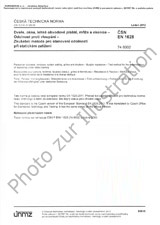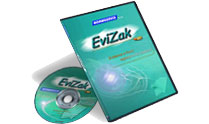Wir benötigen Ihre Einwilligung zur Verwendung der einzelnen Daten, damit Sie unter anderem Informationen zu Ihren Interessen einsehen können. Klicken Sie auf "OK", um Ihre Zustimmung zu erteilen.
ČSN ETSI EN 302208-V3.3.1 (875121)
Radio Frequency Identification Equipment operating in the band 865 MHz to 868 MHz with power levels up to 2 W and in the band 915 MHz to 921 MHz with power levels up to 4 W; Harmonised Standard for access to radio spectrum
Name übersetzen
NORM herausgegeben am 1.2.2021
Informationen über die Norm:
Bezeichnung normen: ČSN ETSI EN 302208-V3.3.1
Zeichen: 875121
Katalog-Nummer: 511395
Ausgabedatum normen: 1.2.2021
SKU: NS-1016615
Zahl der Seiten: 80
Gewicht ca.: 240 g (0.53 Pfund)
Land: Tschechische technische Norm
Kategorie: Technische Normen ČSN
Kategorie - ähnliche Normen:
Die Annotation des Normtextes ČSN ETSI EN 302208-V3.3.1 (875121):
V3.3.1
The present document specifies technical characteristics and methods of measurements for Radio Frequency Identification (RFID) devices used in the frequency ranges 865 MHz to 868 MHz and 915 MHz to 921 MHz.
Power limits up to a maximum of 2 W e.r.p. are specified for this equipment in the frequency band 865 MHz to 868 MHz and up to a maximum of 4 W e.r.p. in the frequency band 915 MHz to 921 MHz.
NOTE 1: The term frequency band is typically used for reference to dedicated bands as described in CEPT/ERC/REC 70-03 [i.9], while frequency range is used in the other cases.
The frequency usage conditions for RFID are EU wide harmonised in the band 865 MHz to 868 MHz according to [i.15] and in the band 915 MHz to 921 MHz according to [i.14]. According to [i.14] EU member states are requested to implement 3 channels only in the 915 MHz to 921 MHz band.
It should be noted that the frequency band 915 MHz to 921 MHz has only a limited implementation status within the European Union and the CEPT countries. CEPT/ERC/REC 70-03 [i.9] provides in appendix 1 an overview of countries where the band is implemented.
The present document applies to RFID interrogators and tags operating together as a system. For each specified band, multiple high power channels are made available for use by interrogators. The tags respond with a modulated signal preferably in the adjacent low power channels. Interrogators may be used with either integral or external antennas.
The types of equipment covered by the present document are as follows:
- - fixed interrogators;
- - portable interrogators;
- - batteryless tags;
- - battery assisted tags;
- - battery powered tags.
These types of radio equipment are capable of operating in the frequency ranges given in table 1 and table 2.
The present document contains requirements to demonstrate that the specified radio equipment both effectively uses and supports the efficient use of radio spectrum in order to avoid harmful interference.
NOTE 2: The relationship between the present document and essential requirements of article 3.2 of Directive 2014/53/EU [i.3] is given in annex A
Normansicht ČSN ETSI EN 302208-V3.3.1 (875121)
Empfehlungen:
EEviZak – alle Gesetze einschließlich ihrer Evidenz in einer Stelle
Bereitstellung von aktuellen Informationen über legislative Vorschriften in der Sammlung der Gesetze bis zum Jahr 1945.
Aktualisierung 2x pro Monat!
Brauchen Sie mehr Informationen? Sehen Sie sich diese Seite an.




 Cookies
Cookies
